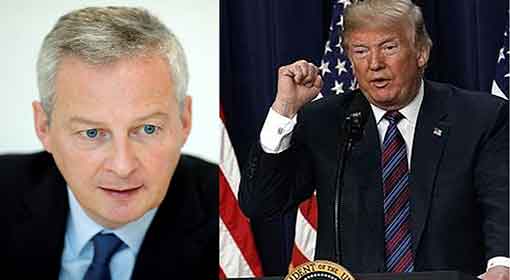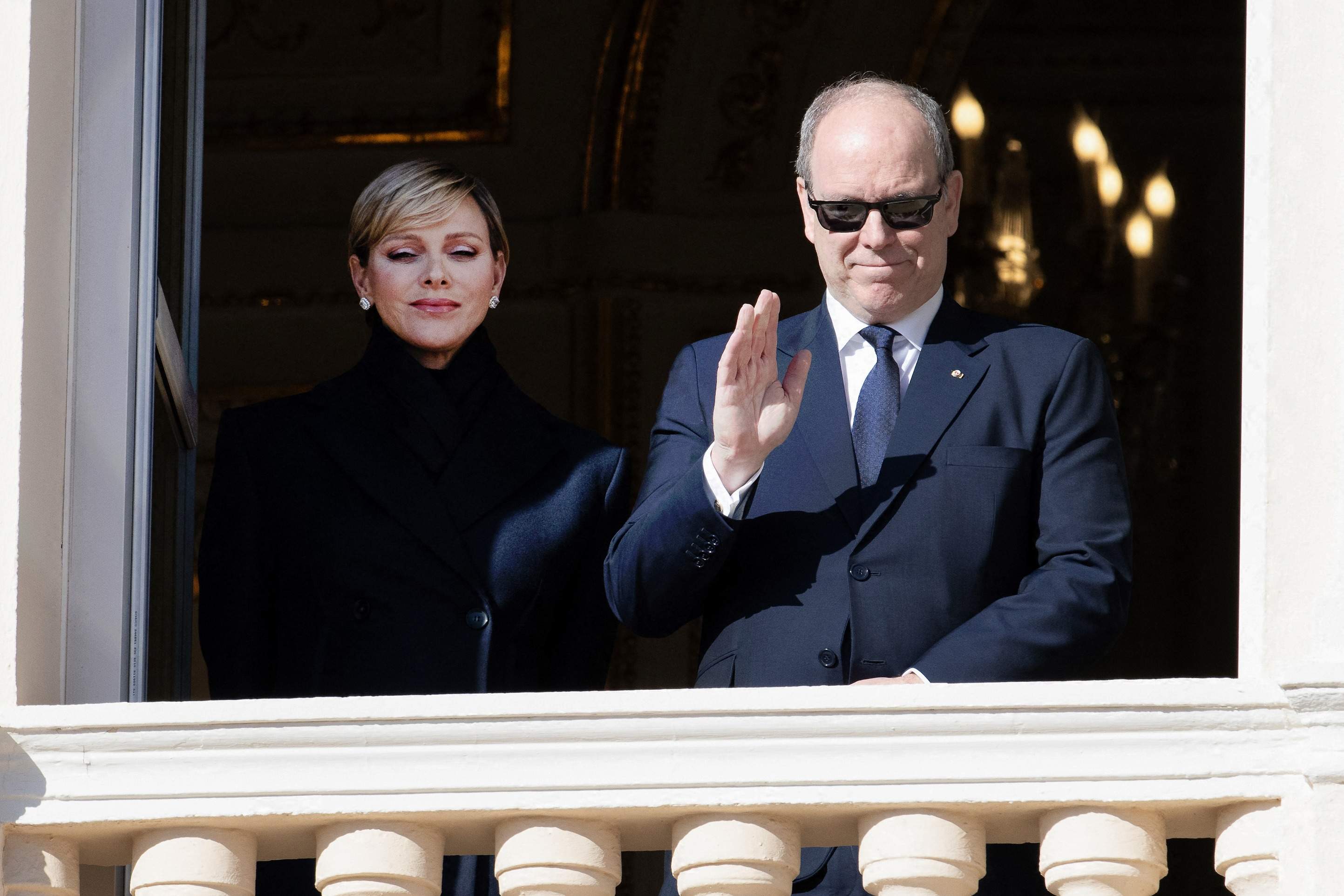Trump's Trade War With Europe: Understanding His Outrage

Table of Contents
The Perceived Unfairness of Trade Practices
Trump consistently framed his trade policies as a response to what he perceived as unfair European trade practices. This perception fueled his actions and rhetoric throughout the trade war with Europe.
Trade Deficits as a Central Grievance
Trump frequently highlighted the US trade deficit with Europe, viewing it as irrefutable evidence of unfair trade practices. He often simplified the complex issue of trade imbalances, presenting them as a direct result of European exploitation.
- Mechanics of Trade Deficits: A trade deficit occurs when a country imports more goods and services than it exports. Trump focused heavily on bilateral deficits, ignoring the complexities of global trade flows.
- Statistics: While the US did run a significant trade deficit with the EU, the specifics varied across sectors. For example, the deficit in automobiles was particularly significant, a key target of Trump’s tariffs. Similarly, agricultural products faced significant challenges.
- Industries Affected: Key US industries impacted included steel, aluminum, and agricultural products (soybeans, in particular). These sectors faced retaliatory tariffs from the EU, adding complexity to the overall impact.
- Bilateral vs. Multilateral Trade: It's crucial to understand the difference between bilateral (trade between two countries) and multilateral (trade among many countries) trade balances. Trump's focus on bilateral deficits often overlooked the broader context of global trade relationships. The impact of a bilateral deficit could also be counterbalanced by surpluses with other countries.
Allegations of European Subsidies and Protectionism
Trump frequently accused European nations of providing unfair subsidies to their industries, creating an uneven playing field for American businesses. He viewed these practices as a direct challenge to fair competition.
- Examples of Criticized Policies: Trump targeted specific European policies, such as those supporting Airbus, which he viewed as unfairly competing with Boeing. He also expressed concerns about agricultural subsidies within the EU's Common Agricultural Policy.
- Impact on US Agricultural Exports: Tariffs imposed by the EU in retaliation for Trump's actions significantly impacted US agricultural exports, particularly soybeans. This further fueled the tensions between the two sides.
- WTO's Role: The World Trade Organization (WTO) plays a critical role in adjudicating trade disputes. However, the WTO process is often slow and complex, and Trump largely bypassed it in his approach to the trade war with Europe.
"America First" Nationalism and Protectionist Policies
Trump's "America First" agenda was a central driver of his trade policies, prioritizing the protection of American jobs and industries, even at the cost of strained relations with European allies. This protectionist stance formed the core of his approach to the trade war with Europe.
Prioritizing Domestic Industries
The core of Trump's strategy was to protect American industries through tariffs and other protectionist measures. This often came at the expense of international cooperation and free trade principles.
- Key Tenets of Protectionism: Trump’s approach aimed to increase domestic production and employment by limiting imports through tariffs. This approach is often criticized for its potential negative impacts on consumers and global economic stability.
- Examples of Tariffs: Trump imposed tariffs on steel and aluminum imports from Europe, triggering retaliatory tariffs from the EU on a range of American products.
- Economic Rationale and Downsides: The economic rationale for protectionism is often debated. Proponents argue it safeguards domestic jobs and industries. Critics highlight its potential to raise consumer prices, stifle innovation, and lead to retaliatory measures.
Political Leverage and Negotiating Tactics
Some analysts believe Trump used the trade war as a tool to gain political leverage and renegotiate trade deals to his advantage. This interpretation suggests that the trade conflict was not solely about economic principles.
- Political Motivations: The trade war could be seen as an attempt to rally his domestic political base by appearing tough on trade and projecting an image of strength on the world stage.
- Impact on Domestic Political Base: Trump's protectionist stance resonated with segments of the American population who felt disadvantaged by globalization.
- Negotiating Style and Effectiveness: Trump's aggressive negotiating style, characterized by threats and ultimatums, was a defining feature of his approach to trade. Its effectiveness in achieving lasting concessions remains a subject of ongoing debate.
The European Union's Response and Retaliation
The EU responded to Trump's tariffs with its own retaliatory measures, significantly escalating the trade war. This response demonstrated the EU's determination to defend its interests and uphold the rules-based international trading system.
Counter-Tariffs and Trade Disputes
The EU's response included counter-tariffs on a range of American goods. This tit-for-tat escalation led to significant economic disruption on both sides of the Atlantic.
- Examples of EU Counter-Tariffs: The EU retaliated with tariffs on various American goods, impacting sectors such as agricultural products, motorcycles, and bourbon.
- Impact on Various Sectors: These tariffs had a significant negative impact on affected American businesses, highlighting the interconnectedness of global trade and the potential consequences of protectionist measures.
- Effectiveness of Retaliatory Measures: The effectiveness of both sides' retaliatory measures is debatable. While they caused economic harm, they didn't necessarily lead to a significant change in either side's overall trade policies.
Strengthening Transatlantic Alliances
The trade war highlighted the importance of strong transatlantic alliances and the need for coordinated responses to protectionist measures. The experience served as a lesson for future cooperation among democratic nations facing protectionist pressures.
- EU Efforts to Strengthen Relationships: The EU sought to strengthen its relationships with other trading partners to mitigate the impact of the trade war with the US and diversify its trade relationships.
- Long-Term Consequences for EU-US Relations: The Trump-EU trade war had long-lasting consequences for transatlantic relations, impacting trust and cooperation on a range of issues beyond trade.
Conclusion
Trump's trade war with Europe was a complex and multifaceted event driven by a combination of economic grievances, nationalist sentiment, and strategic calculations. Understanding the perceived unfairness of trade practices, the "America First" ideology, and the EU's retaliatory responses provides crucial context for analyzing this significant period in global trade relations. Analyzing the lasting impact of Trump's Trade War with Europe is essential for navigating future trade policy and strengthening international economic cooperation. Further research into the long-term economic consequences and the evolution of US-EU trade relations is crucial for a comprehensive understanding of this pivotal event. To gain a deeper understanding of this complex issue, further research into the intricacies of Trump's trade war with Europe is highly recommended.

Featured Posts
-
 Naomi Kampel Stis Maldives Apolaystikes Diakopes Sta 54 Tis Me Ta Paidia Tis
May 26, 2025
Naomi Kampel Stis Maldives Apolaystikes Diakopes Sta 54 Tis Me Ta Paidia Tis
May 26, 2025 -
 Albert De Monaco I La Seva Polemica Separacio De Charlene
May 26, 2025
Albert De Monaco I La Seva Polemica Separacio De Charlene
May 26, 2025 -
 Jensons Fw 22 Extended Everything You Need To Know
May 26, 2025
Jensons Fw 22 Extended Everything You Need To Know
May 26, 2025 -
 Queen Wens Parisian Courtship A New Chapter
May 26, 2025
Queen Wens Parisian Courtship A New Chapter
May 26, 2025 -
 Twenty Years Later A 2005 Romance Films Return To Box Office Glory
May 26, 2025
Twenty Years Later A 2005 Romance Films Return To Box Office Glory
May 26, 2025
Latest Posts
-
 Nba Playoffs Tyrese Haliburton Player Props And Game 2 Betting Guide Pacers Vs Knicks
May 28, 2025
Nba Playoffs Tyrese Haliburton Player Props And Game 2 Betting Guide Pacers Vs Knicks
May 28, 2025 -
 Tyrese Haliburton Performance Predictions Pacers Vs Knicks Game 2 Betting Analysis
May 28, 2025
Tyrese Haliburton Performance Predictions Pacers Vs Knicks Game 2 Betting Analysis
May 28, 2025 -
 Pacers Vs Hawks On March 8th How To Watch And Game Time
May 28, 2025
Pacers Vs Hawks On March 8th How To Watch And Game Time
May 28, 2025 -
 Pacers Vs Knicks Game 2 Tyrese Haliburton Prop Bets And Predictions
May 28, 2025
Pacers Vs Knicks Game 2 Tyrese Haliburton Prop Bets And Predictions
May 28, 2025 -
 Game 1 Aftermath Tyrese Haliburtons Girlfriends Savage Reaction
May 28, 2025
Game 1 Aftermath Tyrese Haliburtons Girlfriends Savage Reaction
May 28, 2025
